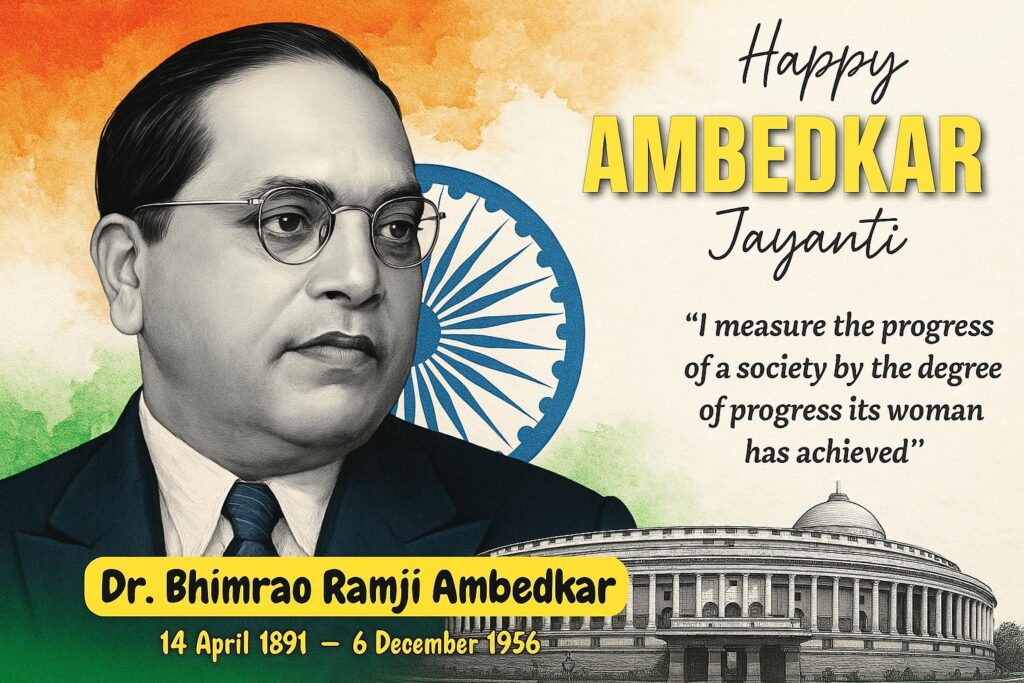
This article was written by Shri Ishan Banerjee and was first published in id24.substack.com @ 26th December of 2024 on the day of Babasaheb Ambedkar’s death ceremony. Today we are republishing this article with author’s permission to commemorate Babasaheb’s Birth ceremony.
Even in tod ay’s context, Ambedkar’s legacy stands as a powerful disruptor in our society. Throughout my educational journey, from graduation to post-graduation, I have encountered his influence, often subconsciously shaping my understanding of social justice and equality. While I still grapple with the complexities surrounding quotas and their role in promoting social equity, my appreciation for the Ambedkarite legacy has deepened over time. Observing the golden statue of Ambedkar in rural Bengaluru and the framed images of him adorning cobbler shops in cities like Delhi, Bengaluru, and Bhubaneswar, it’s evident that he has become an enduring symbol of inspiration and change. My awareness of this legacy was particularly heightened during my post-graduation, when I participated in “Ambedkar Week” at my university—a rare initiative that brought together students from various disciplines. This atmosphere fostered meaningful social dialogues and allowed me to engage with diverse perspectives that echoed Ambedkar’s principles. The discussions we had were not isolated; rather, they reflected a broader national discourse, uniting people across different backgrounds and ideologies. The significance of Ambedkar’s ideology became even more pronounced during the CAA-NRC period when a notable initiative prompted MLAs and public representatives to identify locations for Ambedkar statues and to establish places like “Ambedkar Chowk.” This initiative, which aimed to recognize Ambedkar’s contributions, sparked important conversations about caste and representation, highlighting the ongoing relevance of his work. Even today, the chants of “Jai Bhim” resonate within society, and over one hundred parliamentarians have embraced the slogan “Jai Sangbidhan” during their oaths, reinforcing a commitment to constitutional values. Reflecting on my experiences, particularly my 22 visits to Bargarh, I’ve gained valuable insights into the local dynamics of caste and community. During a 15-day project stay, I frequently jogged my daily 7.5 km route, observing the striking socio-economic divide in the city: the western and central areas were predominantly Sindhi, while the east featured a Marwari majority. This divide is mirrored in the community ties fostered by local educational institutions, namely Jawahar Vidyalay and Saraswati Sishu Mandir. At the heart of the city sits a six-foot statue of Ambedkar, symbolizing hope and unity, though it often stands alone between major events. During my interactions with residents in the Paikamal block, I learned about their rich cultural heritage and, importantly, their perception of the Aam Aadmi Party (AAP) as a viable alternative for their community. One individual shared his transformative experiences in Delhi, where he found the city evolving into a space of equal opportunity since AAP took office. In closing, it’s essential to recognize that the integration of Ambedkar’s legacy into our social fabric is a constructive step toward progress. The continuous practice of expressing appreciation for this legacy plays a crucial role in shaping our collective memory and understanding of worship, whether in relation to gods, demi-gods, messiahs, or icons. This ongoing expression not only fosters dialogue but also encourages us to reflect on and address the challenges that remain in our society.

Ishan Banerjee is an experienced professional serving as a mid-level manager and consultant portfolio. Over 10 years, he has worked in over 70+ districts across 8 states in the eastern, western and northeastern region of India, including Bihar, Jharkhand, Odisha, Chattisgarh , and West Bengal. He has also worked in diverse locations such as Punjab and Meghalaya. His areas of expertise include program management, data analysis, stakeholder liaison, research and development, program design, and program monitoring and evaluation.
